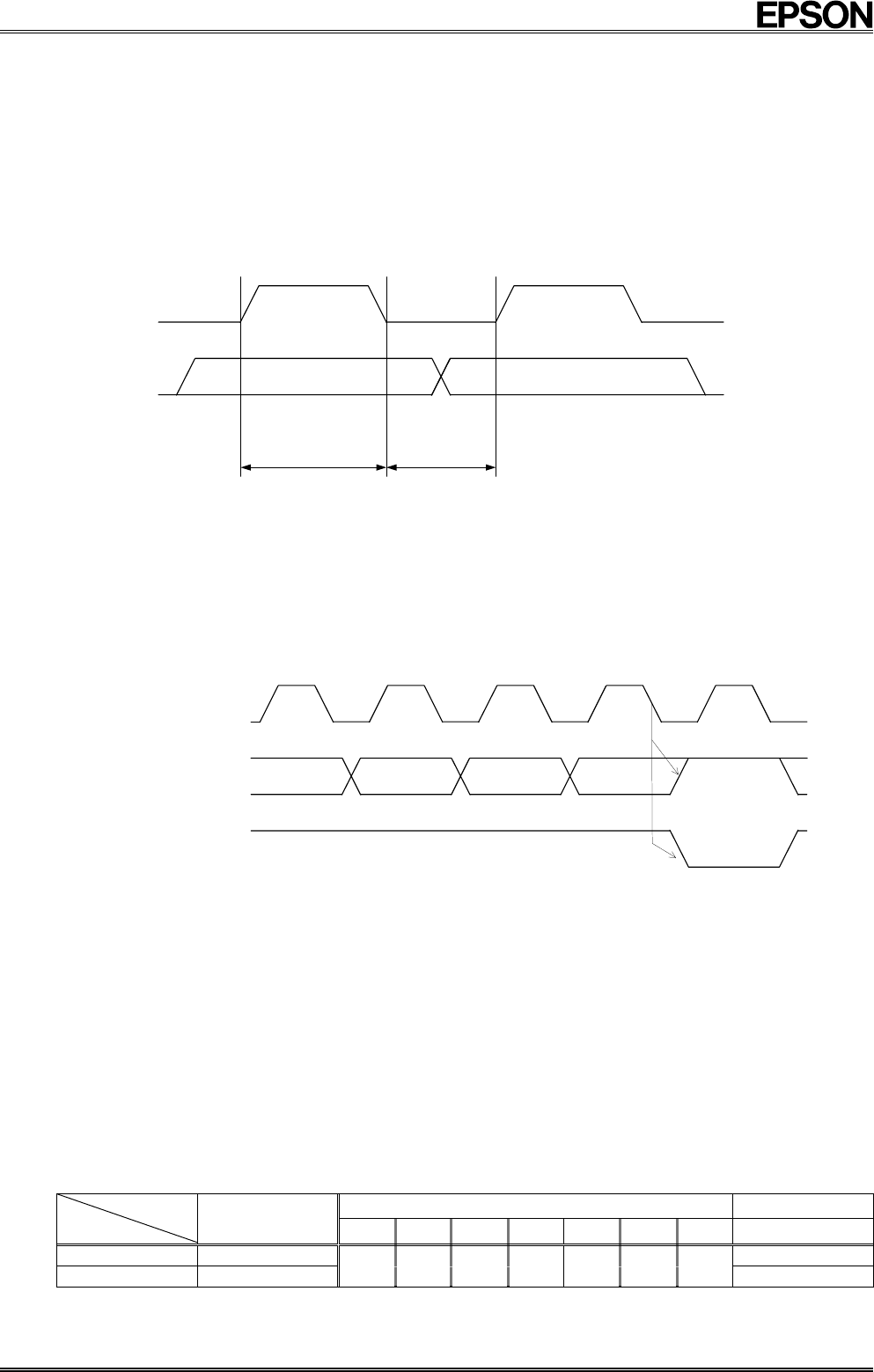
RX
-
8581
SA
/
JE
/
NB
Page - 23 MQ372-02
8.6.4. Data transfers and acknowledge responses during I
2
C-BUS communications
1) Data transfers
Data transfers are performed in 8-bit (1 byte) units once the START condition has occurred. There is no limit
on the amount (bytes) of data that are transferred between the START condition and STOP condition.
(However, the transfer time must be no longer than 0.95 seconds.)
The address auto increment function operates during both write and read operations.
After address Fh, incrementation goes to address 0h.
Updating of data on the transmitter (transmitting side)'s SDA line is performed while the SCL line is at low
level. The receiver (receiving side) receives data while the SCL line is at high level.
SCL
Data is valid
when data line is
stable
SDA
Data can be
changed
∗ Note with caution that if the SDA data is changed while the SCL line is at high level, it will be treated as a
START, RESTART, or STOP condition.
2) Data acknowledge response (ACK signal)
When transferring data, the receiver generates a confirmation response (ACK signal, low active) each time an
8-bit data segment is received. If there is no ACK signal from the receiver, it indicates that normal
communication has not been established. (This does not include instances where the master device intentionally
does not generate an ACK signal.)
Immediately after the falling edge of the clock pulse corresponding to the 8th bit of data on the SCL line, the
transmitter releases the SDA line and the receiver sets the SDA line to low (= acknowledge) level.
SCL from Master
SDA from transmitter (sending
side)
ACK signal
1
2
8
9
SDA from receiver (receiving
side)
Release SDA
Low active
After transmitting the ACK signal, if the Master remains the receiver for transfer of the next byte, the SDA is
released at the falling edge of the clock corresponding to the 9th bit of data on the SCL line. Data transfer
resumes when the Master becomes the transmitter.
When the Master is the receiver, if the Master does not send an ACK signal in response to the last byte sent
from the slave, that indicates to the transmitter that data transfer has ended. At that point, the transmitter
continues to release the SDA and awaits a STOP condition from the Master.
8.6.5. Slave address
The I
2
C bus device does not include a chip select pin such as is found in ordinary logic devices. Instead of using a
chip select pin, slave addresses are allocated to each device.
All communications begin with transmitting the [START condition] + [slave address (+ R/W specification)]. The
receiving device responds to this communication only when the specified slave address it has received matches its
own slave address.
Slave addresses have a fixed length of 7 bits. This RTC's slave address is [1010
001∗
∗∗
∗].
An R/W bit ("*" above) is added to each 7-bit slave address during 8-bit transfers.
Slave address R/W bit
Transfer data
bit 7 bit 6 bit 5 bit 4 bit 3 bit 2 bit 1 bit 0
Read
A3 h
1 (= Read)
Write
A2 h
1 0 1 0 0 0 1
0 (= Write)


















